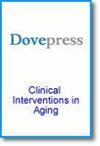作为 PCI 后急性心肌梗死患者主要不良心血管和脑血管事件 3 年预后指标的甘油三酯葡萄糖体重指数: 一项前瞻性队列研究
IF 3.7
3区 医学
引用次数: 0
摘要
背景:先前的研究表明,甘油三酯葡萄糖-体重指数(TyG-BMI)与腹膜透析患者的心血管死亡率有关。然而,TyG-BMI 对急性心肌梗死(AMI)预后的预测价值仍不明确:本研究连续纳入了 408 名接受 PCI 治疗的 AMI 患者。方法:本研究共连续纳入 408 例接受 PCI 的 AMI 患者,然后根据 TyG-BMI 的分层将所有纳入患者分为三组。研究调查了TyG-BMI与主要不良心脑血管事件(MACCEs)之间的关系:结果:参与者被分为三组:1 级(≤ 199.4,136 人)、2 级(199.4- 231.8,136 人)和 3 级(≥ 231.8,136 人)。80例(19.6%)患者出现MACCE:1分层18例(13.2%),2分层26例(19.1%),3分层36例(25.7%)。随着 TyG-BMI 三分层的增加,MACCE 的发生率也在增加(p< 0.05)。多变量 Cox 回归分析显示,糖尿病和 TyG-BMI 是 PCI 后 AMI 患者 MACCEs 的独立预测因素(p< 0.05)。接受者操作特征(ROC)曲线显示,当TyG-BMI≥192.4时,敏感性和特异性分别为60.1%和65.4%,ROC曲线下面积(AUC)为0.632(95%置信区间[CI]:0.562- 0.703;p< 0.001):结论:TyG-BMI水平升高是PCI术后AMI患者复合MACCEs的独立预测因子。本文章由计算机程序翻译,如有差异,请以英文原文为准。
Triglyceride Glucose Body Mass Index as 3 Year Prognostic Indicator for Major Adverse Cardiovascular and Cerebrovascular Events in Patients with Acute Myocardial Infarction After PCI: A Prospective Cohort Study
Background: Previous studies have suggested that triglyceride glucose-body mass index (TyG-BMI) is associated with cardiovascular mortality in patients undergoing peritoneal dialysis. However, the predictive value of TyG-BMI in the prognosis of acute myocardial infarction (AMI) remains unclear.
Methods: In total, 408 AMI patients who underwent PCI were consecutively included in this study. All included patients were then divided into three groups according to tertiles of TyG-BMI. The association between TyG-BMI and major adverse cardiovascular and cerebrovascular events (MACCEs) were investigated.
Results: Participants were divided into three groups: tertile 1(≤ 199.4, n=136), tertile 2 (199.4– 231.8, n=136), and tertile 3 (≥ 231.8, n=136). Eighty (19.6%) patients had MACCEs: 18 (13.2%) in tertile 1, 26 (19.1%) in tertile 2, and 36 (25.7%) in tertile 3. The incidence of MACCEs increased as the tertiles of TyG-BMI increased (p< 0.05). Multivariate Cox regression analysis revealed that diabetes mellitus and TyG-BMI were independent predictors of MACCEs in AMI patients after PCI (p< 0.05). The receiver operating characteristic (ROC) curve showed that when TyG-BMI was ≥ 192.4, the sensitivity and specificity were 60.1% and 65.4%, respectively, and the area under the ROC curve (AUC) was 0.632 (95% confidence interval [CI]: 0.562– 0.703; p < 0.001).
Conclusion: Elevated TyG-BMI level was an independent predictor of the composite MACCEs in patients with AMI after PCI.
Methods: In total, 408 AMI patients who underwent PCI were consecutively included in this study. All included patients were then divided into three groups according to tertiles of TyG-BMI. The association between TyG-BMI and major adverse cardiovascular and cerebrovascular events (MACCEs) were investigated.
Results: Participants were divided into three groups: tertile 1(≤ 199.4, n=136), tertile 2 (199.4– 231.8, n=136), and tertile 3 (≥ 231.8, n=136). Eighty (19.6%) patients had MACCEs: 18 (13.2%) in tertile 1, 26 (19.1%) in tertile 2, and 36 (25.7%) in tertile 3. The incidence of MACCEs increased as the tertiles of TyG-BMI increased (p< 0.05). Multivariate Cox regression analysis revealed that diabetes mellitus and TyG-BMI were independent predictors of MACCEs in AMI patients after PCI (p< 0.05). The receiver operating characteristic (ROC) curve showed that when TyG-BMI was ≥ 192.4, the sensitivity and specificity were 60.1% and 65.4%, respectively, and the area under the ROC curve (AUC) was 0.632 (95% confidence interval [CI]: 0.562– 0.703; p < 0.001).
Conclusion: Elevated TyG-BMI level was an independent predictor of the composite MACCEs in patients with AMI after PCI.
求助全文
通过发布文献求助,成功后即可免费获取论文全文。
去求助
来源期刊

Clinical Interventions in Aging
GERIATRICS & GERONTOLOGY-
CiteScore
6.20
自引率
2.80%
发文量
193
期刊介绍:
Clinical Interventions in Aging, is an online, peer reviewed, open access journal focusing on concise rapid reporting of original research and reviews in aging. Special attention will be given to papers reporting on actual or potential clinical applications leading to improved prevention or treatment of disease or a greater understanding of pathological processes that result from maladaptive changes in the body associated with aging. This journal is directed at a wide array of scientists, engineers, pharmacists, pharmacologists and clinical specialists wishing to maintain an up to date knowledge of this exciting and emerging field.
 求助内容:
求助内容: 应助结果提醒方式:
应助结果提醒方式:


